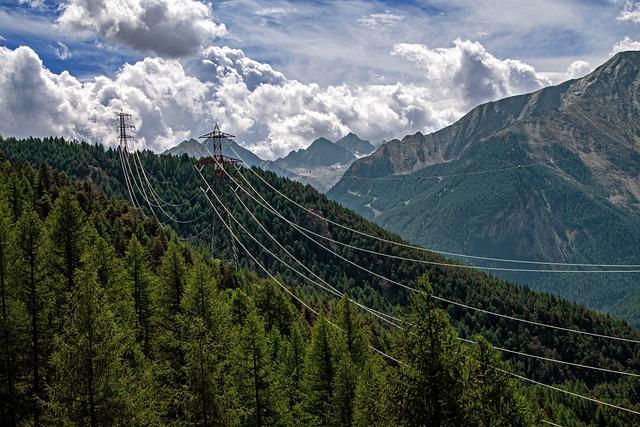Introduction:
Trees play a vital role in habitat restoration, serving as crucial components in the revitalization of ecosystems. Tree planting initiatives have garnered significant attention as a means to restore local ecosystems and combat climate change. The captivating nature of trees lies in their ability to capture carbon from the atmosphere, thus aiding in environmental sustainability< a href="https://www.decadeonrestoration.org/Interactive/tree-planting-and-ecosystem-restoration-crash-course">[1]. Moreover, the concept of biodiversity in reforestation projects underscores the importance of preserving and enhancing the variety of plant and animal species within restored habitats< a href="https://nph.onlinelibrary.wiley.com/doi/10.1002/ppp3.10329">[2]. While tree planting projects offer promise for restoration efforts, caution is advised to ensure they do not overshadow greater priorities such as protecting existing forests and reducing reliance on fossil fuels< a href="https://e360.yale.edu/features/are-huge-tree-planting-projects-more-hype-than-solution">[3]. As we delve into the intricate relationship between trees and habitat restoration, it becomes clear that understanding their pivotal role is fundamental in preserving the balance of our ecosystems.
Table of Contents
- The Importance of Trees in Habitat Restoration
- Benefits of Planting Trees in Ecosystem Restoration Projects
- How Trees Provide Food and Shelter for Wildlife
- Using Native Tree Species for Successful Habitat Restoration
- Best Practices for Tree Planting in Restoration Projects
- Q&A
- Conclusion
The Importance of Trees in Habitat Restoration
Restoring habitats is a critical aspect of environmental conservation, and trees play a vital role in this process. Trees are imperfect but essential partners in habitat restoration, as they provide numerous benefits to both people and wildlife. As highlighted in a study by University of Wisconsin researchers, increasing tree populations in various habitats, including urban areas, is a global initiative that helps to restore ecosystems [1].
One of the key reasons trees are crucial in habitat restoration is their ability to improve the environment. Trees contribute to the restoration process by providing oxygen, improving air quality, and conserving water. Additionally, trees help to preserve soil integrity, prevent erosion, and support biodiversity. These benefits are further emphasized in research that underscores trees as the basic unit for land restoration in forested regions [3].
Understanding underscores the need to prioritize tree conservation efforts. By recognizing trees as imperfect partners that offer a wide array of benefits, we can work towards restoring ecosystems, supporting wildlife, and improving the overall health of our planet.
Benefits of Planting Trees in Ecosystem Restoration Projects
Planting trees in ecosystem restoration projects plays a crucial role in habitat restoration. Trees offer a myriad of benefits that contribute to the rejuvenation of ecosystems and the promotion of biodiversity. By creating a conducive environment for various species to thrive, trees enhance the overall health and balance of ecosystems. Moreover, trees act as natural carbon sinks, aiding in the reduction of greenhouse gases and combating climate change [1].
Furthermore, reforestation initiatives not only help in restoring degraded lands but also provide invaluable resources for local communities. Trees can offer timber, fuelwood, and other sustainable products, supporting livelihoods and fostering economic development in the surrounding areas. Additionally, trees have the potential to improve soil quality, prevent erosion, and regulate water cycles, enhancing the resilience of ecosystems to environmental challenges [2].
How Trees Provide Food and Shelter for Wildlife
When it comes to habitat restoration, trees play a crucial role in providing food and shelter for wildlife. Trees not only offer a diverse range of food sources for various species but also act as natural shelters, protecting animals from harsh weather conditions.
One of the key ways trees support wildlife is by providing a variety of food sources such as nuts, fruits, seeds, and insects. These nutritious offerings attract a range of animals, from birds to small mammals, helping sustain their populations and overall ecosystem health. Additionally, trees serve as habitats for nesting and roosting, offering safe spaces for wildlife to rest, breed, and raise their young.
Moreover, dead trees and limbs are essential components of wildlife habitats, as they provide shelter and food for many species. These decaying structures create a diverse environment that supports a wide range of wildlife, demonstrating the importance of preserving both living and dead trees in habitat restoration efforts [2].
Using Native Tree Species for Successful Habitat Restoration
Native tree species play a crucial role in successful habitat restoration efforts, contributing to the ecological balance and biodiversity of an area. By utilizing native trees, restoration projects can mimic natural ecosystems, providing essential habitats for wildlife and supporting overall ecosystem health. Trees help stabilize soil, prevent erosion, and promote water retention, making them vital components in restoring and maintaining healthy habitats[1].
When selecting native tree species for habitat restoration, it is essential to consider their compatibility with the local environment and ecosystem. These trees should be well-suited to the climate, soil conditions, and biodiversity of the area to ensure their successful establishment and growth. By choosing native species, restoration projects can enhance the resilience of ecosystems and promote the restoration of natural habitats[2].
Furthermore, involving stakeholders and community members in the selection and planting of native tree species can foster a sense of ownership and responsibility for the restoration project. By engaging with the local community, restoration efforts can benefit from increased support and participation, leading to more successful outcomes in habitat restoration[3].
Best Practices for Tree Planting in Restoration Projects
When it comes to tree planting in restoration projects, several best practices can be employed to enhance the success and impact of these efforts. One of the key aspects to consider is selecting a suitable site for planting. Framework trees should be strategically planted in areas that promote biodiversity, ecosystem connectivity, and overall habitat restoration [1]. By carefully choosing the location, the planted trees can thrive and contribute significantly to the regeneration of the ecosystem.
Moreover, utilizing native tree species in reforestation projects is essential for the long-term ecological health of the area. Native trees are adapted to the local climate, soil conditions, and wildlife interactions, making them resilient and supportive of the surrounding habitat [2]. By focusing on Andean forest recovery in Ecuador, for example, the use of native tree species can lead to effective reforestation outcomes that benefit both the environment and local communities.
Implementing a combination of reforestation approaches, such as natural forest re-growth, mixed plantations, and monoculture tree planting, can further enhance the restoration process [3]. Each approach brings unique benefits to the ecosystem, ranging from increased biodiversity to improved soil quality. By incorporating these , we can actively contribute to habitat restoration and conservation efforts worldwide.
Q&A
Q: Why is tree restoration important in habitat restoration efforts?
A: Tree restoration plays a crucial role in habitat restoration efforts as trees provide numerous environmental benefits. They help improve soil quality, maintain biodiversity, mitigate climate change by sequestering carbon dioxide, provide habitat for wildlife, and enhance overall ecosystem resilience. Incorporating trees into restoration projects can lead to lasting ecological benefits, making them a key component in restoring habitats.[1]
Q: Is planting more trees the sole solution to addressing climate change?
A: While planting more trees is an essential component of climate change mitigation, it is not the sole solution. While trees sequester carbon dioxide, it is crucial to also reduce greenhouse gas emissions from various sources and adopt sustainable practices across all sectors. A comprehensive approach that combines tree planting with other mitigation strategies is necessary to tackle climate change effectively.[2]
Q: Why is the use of native tree species emphasized in restoration projects?
A: The emphasis on using native tree species in restoration projects is essential because these species are adapted to the local environment and provide greater ecological value. Native trees contribute to the restoration of natural habitats, support local biodiversity, and are more resilient to climate variability. By using native species, restoration efforts can be more successful in the long term and help restore ecosystems to their original state.[3]
Conclusion
In conclusion, trees play a crucial role in habitat restoration efforts, offering a multitude of benefits such as carbon sequestration, biodiversity support, soil stabilization, flood prevention, and habitat connectivity enhancement. While tree planting initiatives have shown promise in restoring ecosystems, it is essential to understand both the potentials and limitations associated with them. To achieve successful habitat restoration, a combination of preserving intact forests and actively restoring degraded areas through tree plantings is necessary. By recognizing the importance of trees in ecosystem restoration, we can work towards creating more sustainable and resilient habitats for wildlife and communities alike. For more in-depth information on the topic, you can explore the resources provided in Scitable[1], Frontiers in Ecology and Evolution[2], and ClimateFeedback.org[3].
Simpsons Tree Services, Servicing Melbourne’s North Eastern Suburbs
Book a quote online at www.simpsonstrees.com.au




